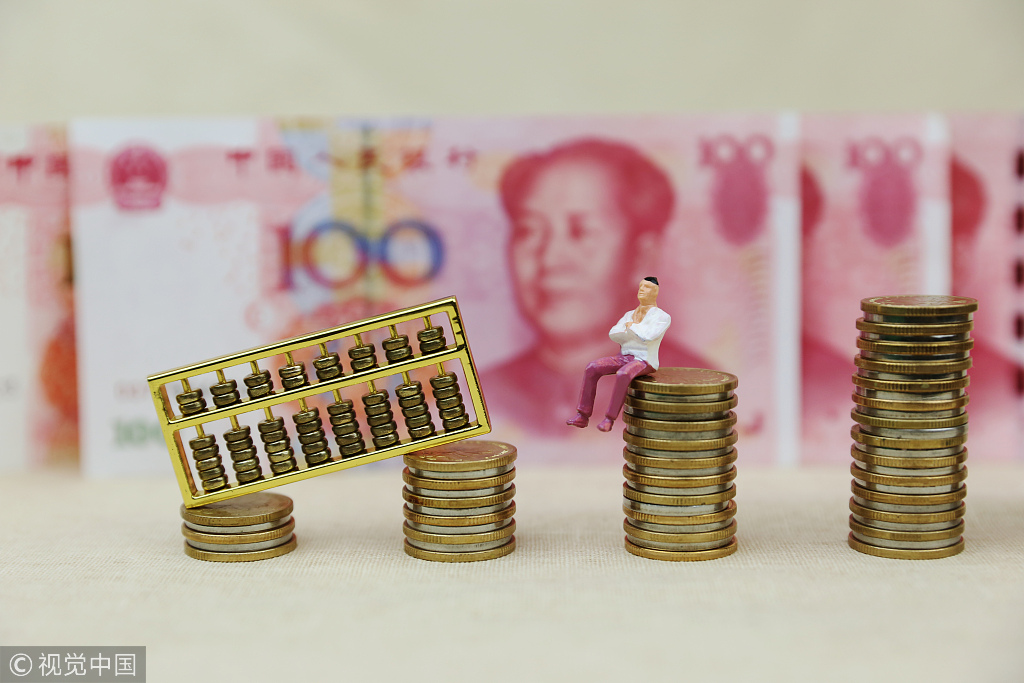
Editor's note: At a recent forum on financial holding firms organized by China Everbright Group and Guanghua School of Management, Peking University, to mark the 40th anniversary of reform and opening-up, some officials and scholars shared their views on the role of finance in boosting the real economy and helping the private sector. Following are excerpts from the speeches delivered by three of them:
Private economy needs a shot in the arm
Gu Shengzu
Financial holding groups should make serious efforts to support the real economy, in particular private economy and innovative economy, and prevent risks so as to better facilitate high-quality economic growth.
First, financial holding groups, or FHGs, have to strike the right balance between financing and the real economy. After all, the 2008 global financial crisis was a result of serious imbalance between the real economy and the financial sector.
As for the Chinese economy, it faces three major economic imbalances-between the real economy's supply and demand structures, between industry and finance, and between the real estate sector and the real economy.
According to the National Bureau of Statistics, the financial sector's value added increased from 4 percent of GDP in 2008 to 8 percent in 2017-higher than even in some developed countries. The need for the FHGs, therefore, is to return to their original function: serving the real economy.
Second, the FHGs should help small and medium-sized enterprises to overcome their financing difficulties, and promote the healthy and sustainable development of private enterprises, which are a pillar of the real economy. President Xi Jinping has said that the government should resolutely support the development of the private economy and SMEs.
Financing difficulty and high financing costs are the top problems facing private enterprises, especially SMEs. As such, based on equality and market-oriented principles, the FHGs should focus on providing comprehensive financial services, including credits and loans, and asset management, to private enterprises.
Third, the FHGs should aim for technological and financial innovation in order to promote innovation in enterprises and facilitate the high quality development of the real economy. Also, the FHGs should focus more on the long-term development and market value of enterprises, while promoting enterprises' transformation and upgrading, and enhancing support to hightech innovative enterprises in key fields so China can become a leading player in the Fourth Industrial Revolution.
Last, the FHGs should also play the role of financial stabilizer so that financial risks can be prevented, financial system security safeguarded and a stable financial environment built for sustainable development.
Gu Shengzu, vice-chairman of the Chinese People's Political Consultative Conference National Committee
Moderate growth can double GDP by 2030
Liu Qiao
The FHG model has been developed to meet the requirements of rapid industrialization, especially because internal capital market cooperation can effectively reduce financing costs, and the FHGs can help build big data platforms and an internal risk prevention and control system to reduce risks.
To better develop China's FHG model, three major factors should be kept in mind.
First, a good financial asset scale does not necessarily mean the more the better, although higher levels of financing are needed.
One indicator of good financing is reduced financing costs. In the United States, for example, the average cost of generating financial asset is 1.5 percent to 3 percent, but in China it is 3 percent or higher based on our (Guanghua School of Management's) study.
Second, in the four decades of reform and opening-up, countless enterprises have emerged, but many of them have not performed well in terms of return on capital, which is a yardstick to measure value creation or value added.
In the past two decades, the average return on capital of China's A-share listed companies has been only 3 percent, which is not good enough. As a result, the leverage ratio has been relatively high, and capital has failed to flow from sectors with low return to sectors with high return-rather the flow has been in the other direction.
In this context, the FHGs can be expected to make financial innovations to shift capital to sectors and enterprises with high return-a much-needed change for high quality development at the micro level.
Third, China's economic momentum has changed. According to our estimates, if China maintains a 5.5 percent economic growth from 2020 onward, by 2030 its actual GDP could reach 160 trillion yuan ($23.05 trillion) according to current price rates. Its financial asset scale is expected to be four times (as compared to 3.7 times now) the volume of GDP, or 600-700 trillion yuan, by 2030.
According to our study, by 2035 China's per capita GDP is expected to reach $35,000 based on purchasing power parity. Accordingly, Chinese people's consumption demand will change, with higher demand for high-end services, in medical treatment, as well as health and food safety, which in part will fuel the national economy.
Liu Qiao, dean of Guanghua School of Management, Peking University
Nation needs high quality development
Li Xiaopeng
This year marks the 40th anniversary of reform and opening-up, which among other things have gifted us FHGs, which now need healthy development.
An FHG's core function is to strike the right balance between risk and efficiency. Statistics show a big, comprehensive FHG has greater risk resistance capacity than a single financial organization-this was proved during the global financial crisis. Still, an FHG's efficiency may decline and risk increase if it simply pursues to increase its scale with an aggressive development strategy.
China's FHGs have developed rapidly over the past few years and made great contributions to the development of the real economy. But while doing so, they have also revealed many of their problems.
Beginning this year, regulators including the People's Bank of China (the central bank) and the China Banking and Insurance Regulatory Commission are dealing strictly with FHGs' violations-they have, to a large extent, curbed the FHGs' blind expansion and illegal behaviors, which have helped eliminate many of the hidden risks and thus promoted the healthy development of the financial sector.
China Financial Stability Report 2018, issued by the central bank recently, has laid out the regulatory ideals for the FHGs, which will not only help implement all-round, continuous and targeted regulations, but also establish an overall regulation planning system for the FHGs.
The key points, the report said, for the regulator in the next stage will include making clear the market access regulation, strengthening regulation on capital adequacy ratio and enhancing the overall risk control of the FHGs.
Moreover, enacting and implementing regulations for FHGs will ensure that they follow the law during their development process, better serve the real economy, help improve the modern financial system and company governance, and prevent systemic financial risks. Besides, as a special company management model, financial holding companies should be subject to licensing.
Since FHGs are like financial department stores that can meet diversified demands during the period of high quality economic development, they should put their advantages of comprehensive operation to good use by supporting the real economy, especially the private economy, and promoting China's high quality economic growth.
Li Xiaopeng, Party secretary and chairman of China Everbright Group

